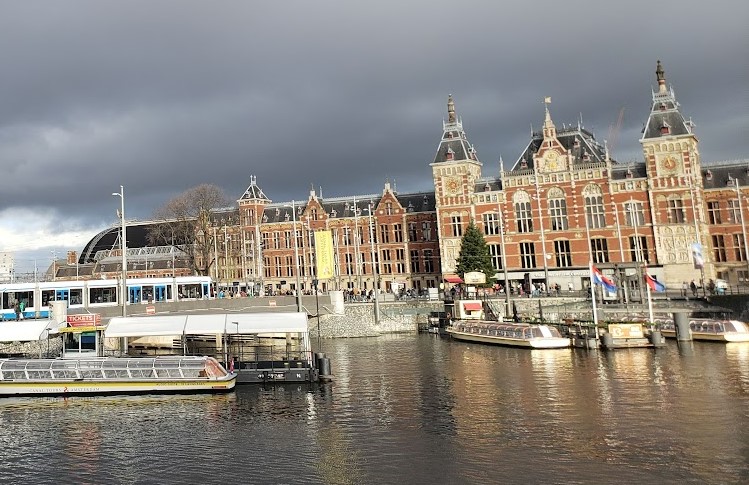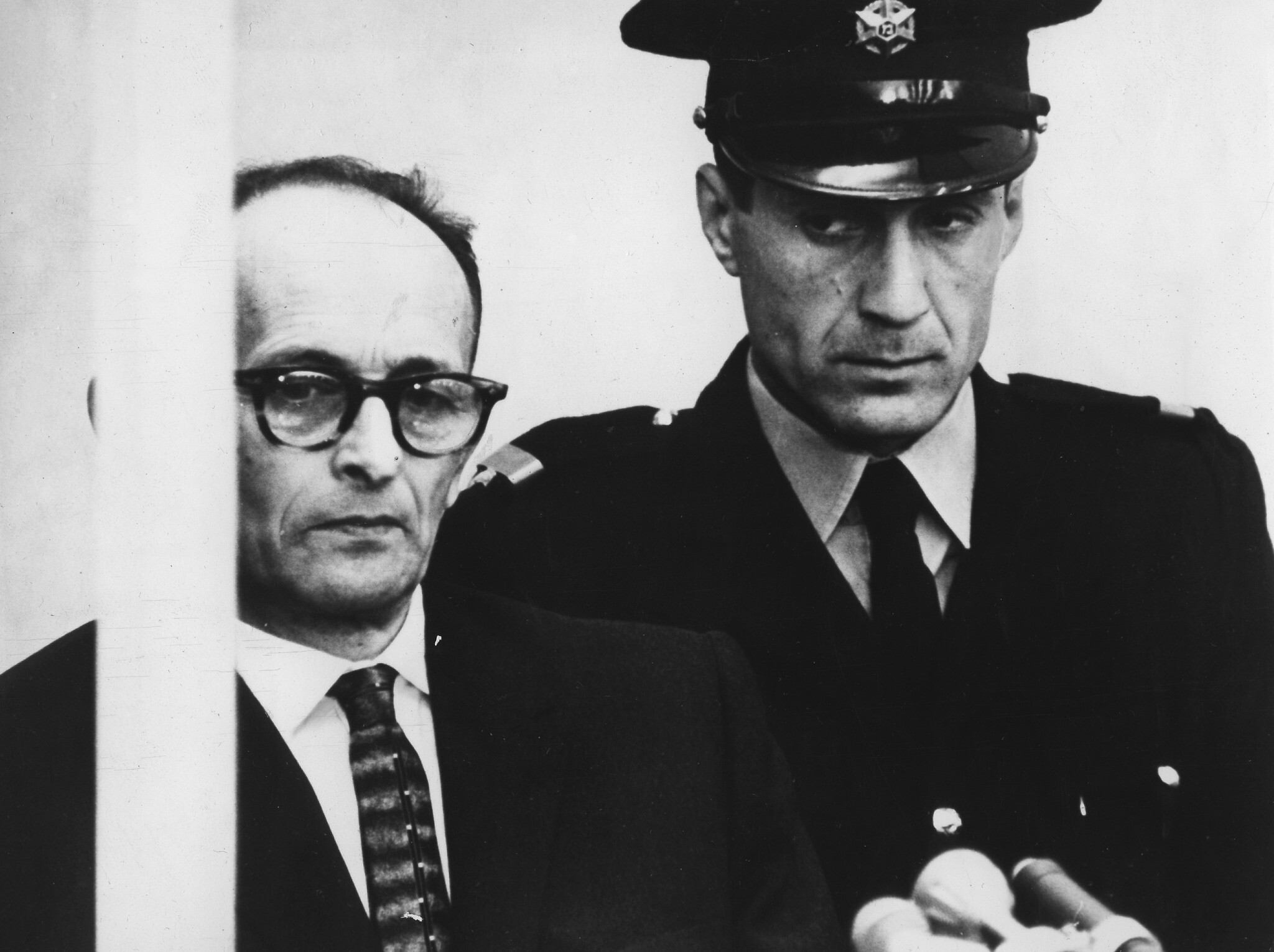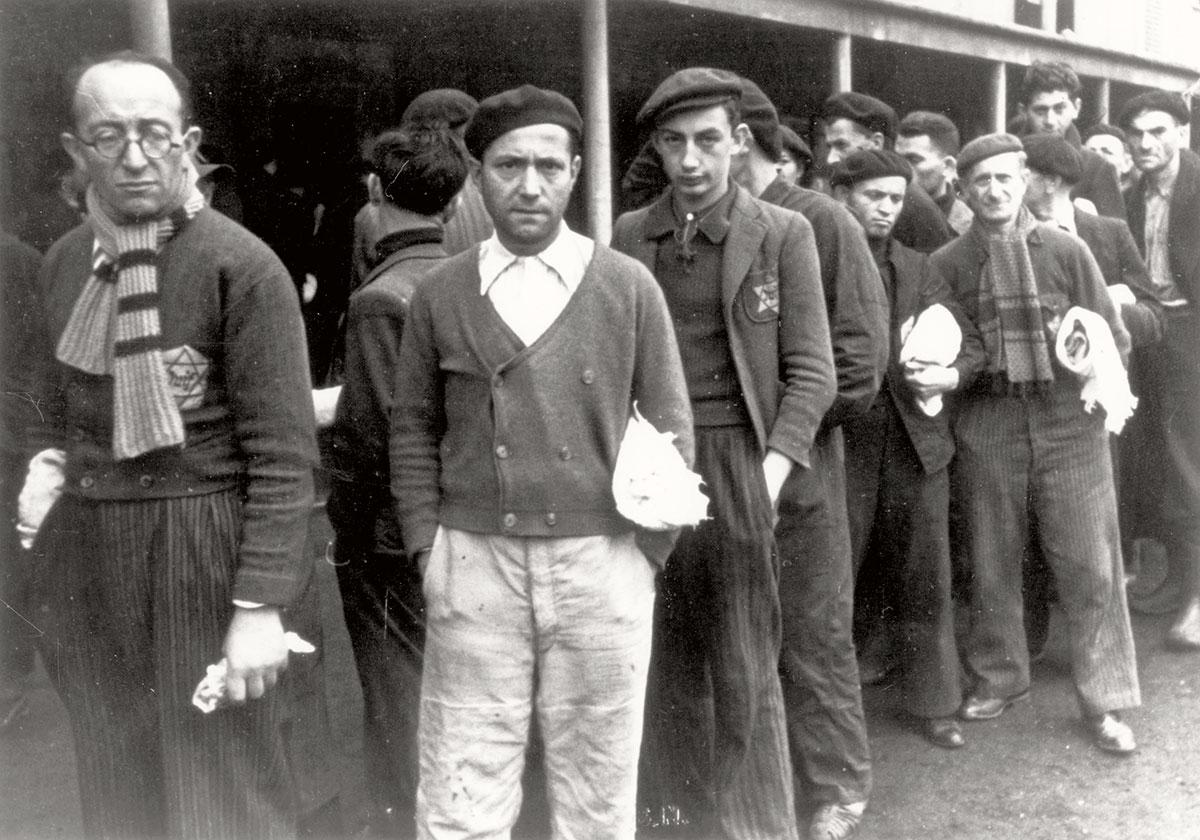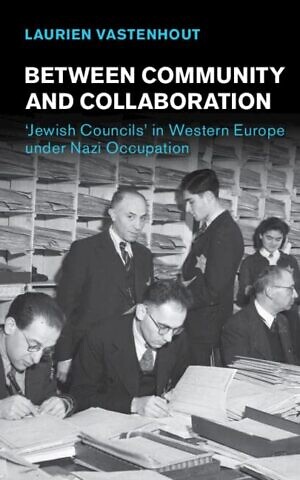For several decades after World War II, Jewish councils appointed by the Nazi occupiers of Europe have been blamed for allegedly collaborating in the Holocaust.
However, in a recently published international and comparative study, Dutch historian Laurian Vastenhout demonstrated that Jewish councils had virtually no ability to change Germany’s plan to murder every Jew in Europe.
In his book, “Between Community and Collaboration: ‘Jewish Councils’ in Western Europe under Nazi occupation, Vastenhout adopts a socio-historical approach to examine the councils and their leadership in the Netherlands, Belgium and France.
“I tried to understand the nature of these organizations in the larger context of the National-Socialist regime,” Wastenhout told The Times of Israel. “I show what factors influenced the work of Jewish councils and the status and choices of their leaders,” she said.
Throughout Nazi-occupied Europe, Jewish councils were created to serve as liaisons between the German authorities and Jewish communities. Council members served at the pleasure of the Nazis, and there were examples of Members are being executed for not obeying the order.
Previous studies have largely focused on specific Jewish councils or their functions. personal leader, However, Vastenhout said, the councils must be examined with each other for deeper context and understanding.

Amsterdam Jews attempt to meet with members of the Nazi-appointed Jewish Council during the German occupation of the Netherlands (Public Domain)
For example, wrote professor at the Institute for War, Holocaust and Genocide Studies (NIOD) in the Netherlands, the Dutch Jewish Council was initially given autonomy only in Amsterdam – as opposed to autonomy over Jews throughout the Netherlands – because the top German occupiers The leaders had previously established city-based “Judenrat” in occupied Poland.
Eventually, however, it became clear that this model did not work properly because Jews in the Netherlands were not concentrated in local ghettos as was usually the case in Poland. As a result, Dutch council control was officially extended to the national level in October 1941, Westenhout said.
Anti-Jewish policies were continually adapted and reformed.
“It is clear that the German authorities used the knowledge and experience gained in one place to develop a ‘final solution to the Jewish question’ in other geographic locations. Anti-Jewish policies were continually adapted and improved,” Wastenhout wrote. Told.
The comparative approach also reveals how local conditions shaped German policy as well as the status and choices of Jewish leaders, Wastenhout said.
In Belgium, the Union of Jews in Belgium (AJB) – which functioned as the Jewish Council in that country – was led by men who had almost no experience in running communal affairs. In contrast, the Dutch Jewish Council was led by two men who were widely known sectarian leaders before the war.
“It affected the status of these leaders, their confidence and the choices they made,” Wastenhout said. “Existing historiography has never really taken note of this because conditions in Belgium were rarely compared with those of other countries.”
According to Yad Vashem, Belgium’s AJB was, “from the beginningNot liked, trusted or respected by the Belgian jury.”
In early 2022, the Dutch Railways (NS) funded an investigation led by Wastenhout. NS wartime activities Staff during the German occupation.

During the Holocaust in the Netherlands, the Dutch Railways operated trains full of Jews to Amsterdam and Dutch transit camps. Most Amsterdam trains to leave Central Station on December 27, 2022 (Matt Lebovich, The Times of Israel)
The investigation was part of the railway company’s efforts to “investigate NS’s role in the Holocaust” and “take responsibility for” [the company’s] Action during World War II. ,
According to Wastenhout, “political-ideological sympathies within the company have not been systematically investigated before.”
‘He faced a dilemma’
As the title of his book indicates, Vastenhout is most interested in how Jewish councils managed to serve the community and – at the same time – take orders from the German authorities.
Wastenhout wrote, “Most Jewish leaders under the Nazi regime were interested first and foremost in alleviating the suffering of their communities.” “In doing so, they faced a dilemma: they could only provide social assistance if they collaborated with the Germans.”
Across Europe, Council leaders generally saw themselves as helping to reduce German orders as opposed to collaborating.
Wastenhout said, “Jewish leaders had to perform a balancing act, aiding their communities while meeting German demands, while at the same time trying to reduce their level of cooperation.” In the course of his research, he also examined the extent to which Jewish councils were able – or willing – to support and actively engage in resistance efforts.
The character of the Jewish councils was especially corrupted after the war, Wastenhout explained, “when courts of jewish honor and formally assessed by state courts across Europe [the councils’] cooperation with the German occupation authorities,” she wrote.
In Israel and Europe, Holocaust survivors began to identify with former kapos and – less frequently – former Jewish council members. The “Honor Court” proceedings attempted to hold “collaborators” accountable, but also helped “reinforce the disapproval” most Jews already had of the Jewish leadership, Wastenhout said.
“It’s important to distinguish between perpetrators and victims,” Wastenhout said. “Jewish leaders were under severe pressure, and were forced to respond to the new regulations on an ad hoc basis. They did not fully see the impact of the decisions they made, and were constantly threatened with severe retribution if they did not Went.
‘A very comprehensive approach’
When Hannah Arendt infamously criticized Jewish councils for helping to facilitate the Holocaust, she set the tone for a debate that has yet to be replaced.
“Wherever Jews lived, there were recognized Jewish leaders, and this leadership, almost without exception, in one way or another, for one reason or another, collaborated with the Nazis,” Arendt wrote in “Jerusalem Eichmann in,” wrote in his 1963 book. of the Jewish state capture and test of Adolf Eichmann.

Adolf Eichmann is seen standing in his bulletproof glass box during judicial proceedings at the Beit Ha’Aim building in Jerusalem, April 12, 1961. (AP Photo / STR)
“The whole truth was that if the Jewish people were really disorganized and leaderless, there would have been chaos and much misery, but the total number of victims would hardly have been between four and a half to six million people,” wrote Arendt.
According to Wastenhout, scholars, including Arendt and Holocaust historian Raoul Hilberg, “blame Jewish leaders for their role in the extermination of European Jewry and attribute more agency to these leaders than was in reality.”
This “ethical” approach to studying the councils has dominated scholarship for decades, Wastenhout said, in which the “actions and decisions” of the Jewish councils have been “proportionately examined and evaluated”.
Wastenhout said, “I think we should take a broader and more contextual approach, which explains why the councils acted the way they did and what the rival German institutions’ intentions were during the war.”
Retrospective satire directed at Jewish councils has been particularly strong in the Netherlands, where 75% of the Jewish community – or 102,000 Jews – killed in Auschwitz-Birkenau, Sobibor and other sites.
The proportion of Jews killed in the Netherlands is much higher than in France and Belgium, where 25% and 40% of the Jewish communities were murdered.
“The question of whether or not the Dutch Jewish Council has been instrumental to the deportation and extermination of the Jews, and whether its leaders can (or should) be held accountable in this regard, has been central to many studies,” Wastenhout has written.
The proportion of Jews killed in the Netherlands is higher than in France and Belgium, where 25% and 40% of the Jewish communities were murdered.
One of the charges against the Dutch Jewish Council was that its members had provided the German authorities with deportation lists and hidden addresses. Hiding place Anne Frank’s.
In actuality, the Nazis had the names and addresses of Dutch Jews before the Jewish Council was established, Wastenhout said. Furthermore, the council could do nothing to prevent the mass arrests and deportations that began in the summer of 1942, the historian said.
As demonstrated by Wastenhout, council leaders in Western Europe had almost no ability to change – much less understand – the processes around them. The councils certainly did not play a “significant” role in the destruction of European Jewry, as some historians have claimed.
“Above all, this new important study shows that it is necessary to look beyond the level of individual council leaders and their choices,” said Vastenhout, whose next book will be on the activities of the Dutch national railways during World War II.
“Instead, we must understand the larger contexts in which they were forced to cooperate as decisive in determining what room for maneuver the Jewish leaders had. This allows us to move away from a moral perspective. that is often implicit in our understanding of these institutions,” Wastenhout said.




